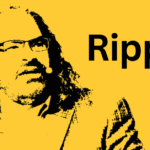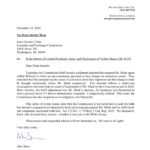
CryptoSlate’s SlateCast recently welcomed Brandon Kumar, co-founder of Layer3, to discuss the platform’s mission to revolutionize crypto engagement through user-owned value. Joined by CryptoSlate’s Editor-in-Chief Liam “Akiba” Wright and CEO Nate Whitehill, Kumar shared insights into Layer3’s business model, future goals, and the broader trends shaping the crypto industry.
Redefining User-Owned Value
Layer3’s core mission centers on “user-owned value,” a concept that flips the traditional advertising model. Kumar explained,
“When a user is spending time on Layer3, they’re actually able to earn, in addition to discovering and finding protocols relevant to their needs and interests.”
Unlike traditional platforms like Google or Facebook, which monetize user attention for corporate profit, Layer3 ensures users share the economic value generated from their activity.
By fostering this shift, Layer3 provides users with a more direct connection to protocols and projects within the crypto ecosystem. Kumar elaborated,
“What we’re trying to basically convey is this notion of a user who spends time but also earns economic value while being advertised to.”
The Journey from Traditional Finance to Crypto
Kumar’s background in traditional finance significantly shaped his approach to Layer3. He previously worked at Accolade Partners, a prominent alternative asset manager, where he gained experience in venture capital and technology investments.
“We looked at what was happening in crypto venture and said it resembles a lot of what was happening in the 80s and 90s within traditional venture capital,” Kumar noted.
This unique perspective allowed Kumar to recognize the potential of the crypto space early on. He emphasized that his financial experience taught him the importance of robust business models and defensibility. “Understanding business models and dispassionately thinking about them was essential,” he said, adding that the experience helped him make strategic choices in Layer3’s growth.
How Layer3 Drives Engagement and Supports DAOs
Layer3’s business model operates as a two-sided marketplace. On one side, large layer-one (L1) and layer-two (L2) ecosystems like Optimism and Arbitrum seek to attract users and developers. Conversely, users look for meaningful ways to engage with on-chain protocols. Layer3 bridges this gap.
“Our business model is a two-sided marketplace. We work with these ecosystems to help them reach, acquire, retain, and engage users on-chain,” said Kumar.
For users, Layer3’s platform offers more than just “quests” for rewards. Instead, it provides a holistic experience that includes trading, prediction markets, and on-chain engagement opportunities.
Additionally, Layer3’s role extends into supporting Decentralized Autonomous Organizations (DAOs). “We’re one of the more active participants in our customers’ DAOs,” Kumar stated, highlighting their significant role as a delegate in Optimism and Arbitrum. The platform aims to create meaningful on-chain engagement rather than superficial activity.
Navigating Regulatory Uncertainty
Regulatory uncertainty is one of the most significant challenges for Layer3—and the entire crypto industry. “Pace of innovation is significantly hindered,” Kumar explained, referencing the burden of compliance faced by U.S.-based crypto startups. “Your lawyers basically have a heavy hand in the type of product that you’re building,” he added, alluding to the complications of navigating regulations.
Kumar also acknowledged the role of Operation Choke Point 2.0, in which U.S. banks have reportedly restricted banking services for crypto firms.
“What the banking system did was basically make it such that you couldn’t maintain payroll,”
Kumar said, recounting the experience of other founders in the space.
What’s Next for Layer3?
Looking ahead, Layer3 aims to expand its operations into three core verticals: distribution, trading, and a skunkworks division focused on cutting-edge development at the intersection of AI, conversational finance, and crypto. “We’re restructuring the company across three verticals,” Kumar explained, outlining how the platform will cater to its growing user base while exploring emerging market trends.
Layer3 also plans to introduce a proprietary token to facilitate revenue-sharing and user incentives. “A percentage of the fees that we generate is automatically used to buy back the L3 token,” Kumar noted, adding that the token will play a critical role in aligning incentives across stakeholders.
Future Trends: Mobile, Speculation, and New User Behavior
Kumar foresees two major narratives dominating the next crypto cycle: mobile-first development and the “TikTok-ification” of capital markets. “This will be the mobile era,” he said, hinting at an ongoing acquisition of a mobile trading platform that will mark a pivotal moment for the space.
He also sees growing engagement from younger generations, with Gen Z’s financial habits shaped by platforms like Robinhood, sports betting apps, and crypto-native products. “Speculation of everything” will be a core theme of the next cycle, as 24/7 real-time markets become the norm, driven by crypto-native tools.
Conclusion
The SlateCast episode with Brandon Kumar provided deep insights into the evolution of user-owned value, Layer3’s ambitious plans for crypto engagement, and the role of regulation in shaping the industry’s future. By aligning user incentives with on-chain engagement and creating multi-product offerings, Layer3 aims to redefine Web3 participation.
As regulatory frameworks develop and more crypto-native projects seek to engage users directly, Layer3’s approach to user-owned value and multi-channel engagement may offer a blueprint for the next era of decentralized growth.








